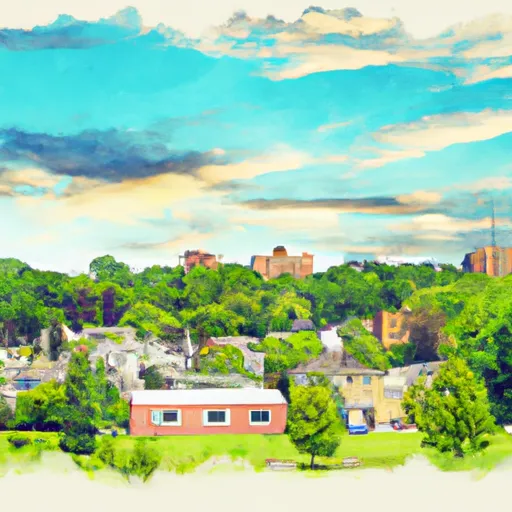-
 Snoflo Premium
Snoflo Premium
Get unlimited access to all our content
With no Ad interruptions! - Start Your Free Trial Login with existing account
Saint-Hilaire
Eden Index
Climate
4.8
•
Recreation
0.6
•
Community
•
Safeguard
2.1/10

Saint-Hilaire, Minnesota is a small town located in northwest Minnesota. It experiences a continental climate with cold winters and warm summers. The average high temperature in January is around 17°F (-8°C), while in July it reaches around 82°F (28°C). Precipitation is evenly distributed throughout the year, with an annual average of 24 inches (61 cm). Snowfall is common during the winter months, with an average of 40 inches (102 cm) per year.
The town is surrounded by several lakes and rivers, making it rich in hydrological constituents. The Red Lake River flows near Saint-Hilaire, offering opportunities for fishing, boating, and water sports. The area also has numerous wetlands and marshes, attracting a wide variety of bird species, making it a popular spot for birdwatching.
Outdoor recreation opportunities in Saint-Hilaire include hiking, biking, and camping. The town is close to state parks and recreational areas, such as Old Mill State Park and Red Lake Wildlife Management Area, offering scenic trails and picnic spots. Hunting is also popular in the region, with abundant deer and waterfowl populations.
In summary, Saint-Hilaire, Minnesota experiences a continental climate with distinct seasons. It is surrounded by lakes and rivers, providing ample opportunities for outdoor activities, including fishing, boating, hiking, and hunting.
What is the Eden Index?
The Snoflo Eden Index serves as a comprehensive rating system for regions, evaluating their desirability through a holistic assessment of climate health, outdoor recreation opportunities, and natural disaster risk, acknowledging the profound impact of these factors on livability and well-being.
Climate Health Indicator (CHI): 4.8
Saint-Hilaire receives approximately
572mm of rain per year,
with humidity levels near 83%
and air temperatures averaging around
5°C.
Saint-Hilaire has a plant hardyness factor of
3, meaning
plants and agriculture in this region thrive during a short period during spring and early summer. Most
plants will die off during the colder winter months.
By considering the ideal temperature range, reliable water supplies, clean air, and stable seasonal rain or snowpacks, the Climate Health Indicator (CHI) underscores the significance of a healthy climate as the foundation for quality living.
A healthy climate is paramount for ensuring a high quality of life and livability in a region, fostering both physical well-being and environmental harmony. This can be characterized by ideal temperatures, reliable access to water supplies, clean air, and consistent seasonal rain or snowpacks.
Weather Forecast
Streamflow Conditions
Lower Red
Area Rivers
Lower Red
Snowpack Depths
Lower Red
Reservoir Storage Capacity
Lower Red
Groundwater Levels
Recreational Opportunity Index (ROI): 0.6
The Recreational Opportunity Index (ROI) recognizes the value of outdoor recreational options, such as parks, hiking trails, camping sites, and fishing spots, while acknowledging that climate plays a pivotal role in ensuring the comfort and consistency of these experiences.
Access to outdoor recreational opportunities, encompassing activities such as parks, hiking, camping, and fishing, is crucial for overall well-being, and the climate plays a pivotal role in enabling and enhancing these experiences, ensuring that individuals can engage in nature-based activities comfortably and consistently.
Camping Areas
| Campground | Campsites | Reservations | Toilets | Showers | Elevation |
|---|---|---|---|---|---|
| Rothsay City Park | None | 1,211 ft | |||
| Heiberg Park | None | 1,019 ft | |||
| Middle River Park | 12 | 1,140 ft | |||
| Legion Park | 15 | 1,070 ft | |||
| Strathcona City Park | None | 1,136 ft | |||
| Durgin Memorial Park | None | 1,069 ft | |||
| Sherin Memorial City Campground | None | 1,325 ft | |||
| Pelan Pioneer Park | None | 1,049 ft | |||
| Delagoon Rec Area | 36 | 1,222 ft | |||
| Wagner Park | 78 | 1,033 ft |
Nearby Fishing
Catastrophe Safeguard Index (CSI):
The Catastrophe Safeguard Index (CSI) recognizes that natural disaster risk, encompassing floods, fires, hurricanes, and tornadoes, can drastically affect safety and the overall appeal of an area.
The level of natural disaster risk in a region significantly affects safety and the overall livability, with climate change amplifying these risks by potentially increasing the frequency and intensity of events like floods, fires, hurricanes, and tornadoes, thereby posing substantial challenges to community resilience and well-being.
Community Resilience Indicator (CRI):
The Community Resilience Indicator (CRI) recognizes that education, healthcare, and socioeconomics are crucial to the well-being of a region. The CRI acknowledges the profound impact of these elements on residents' overall quality of life. By evaluating educational resources, healthcare accessibility, and economic inclusivity, the index captures the essential aspects that contribute to a thriving community, fostering resident satisfaction, equity, and social cohesion.

